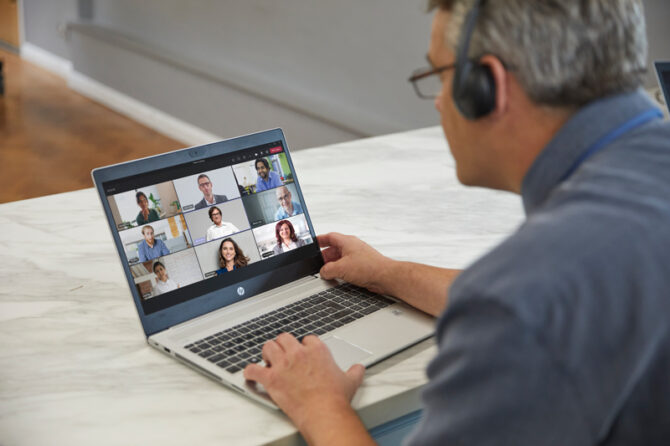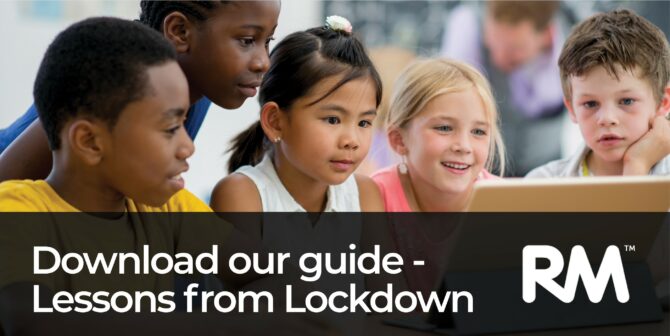On the 18th March 2020, we all watched on, slack-jawed, as Gavin Williamson announced that after schools shut their gates in two days’ time, they would remain closed until further notice. It was inconceivable – a chilling marker of the predicament we were in with Covid-19.
Eighteen months on, and a new normal has settled upon schools, along with new vocabulary and new routines that permeate our daily lives: remote learning, ‘Teams’ and ‘Meets’, close contacts, enhanced cleaning, social distancing, lateral flow testing, isolation. Schools are left dealing with the legacy of lockdown on children and young people’s learning and mental health, as well as the challenges to continuing educational provision posed by an endemic virus running roughshod through their halls.
Yet in this, there is one legacy of lockdown that could be extremely helpful – and that is the learning and insight we gained into the use of educational technology over this period. Not only online/digital teaching and learning resources, but also the cloud computing, productivity and collaboration tools from Microsoft and Google that for most schools became the bedrock of remote learning.

Of course, there is no substitute for in-person teaching, for the interaction that happens in a real-life classroom and for professional teaching experience and expertise. Yet what we saw emerging from remote provision at a zoomed out, national level is the many ways that technology can be used to enhance teaching, learning, and learning management, assist teachers to manage their workload, and engage different learners with varying needs, learning styles and preferences.
What we saw – and are still seeing – is educators collaborating online, using each and every tool and type of media at their disposal to make lessons interactive and engaging for students isolated in their own homes. Teachers creating their own interactive resources or curating the best available free and paid-for sources from the internet to build repositories of resources stored in the cloud and therefore readily shareable and reusable, avoiding duplication of effort not only in-year but through successive cohorts.
What’s more, we saw how many pupils engaged with technology with relish and aplomb. Lots of students actively liked the fact that they could take a degree of control over their learning, pacing it according to their own needs, rather than being swept along in the general current of a class. This is something that should ideally be capitalised on now that they are back in school too (Though sadly, device availability and connectivity may get in the way). With the right set-up, technology allows over-stretched teachers and TAs to focus more time on the groups and individuals who need it most, while also ensuring that other children are using their time productively and providing stretch and challenge for the more able.
And we saw a whole new practice emerge in online lessons of using chat, surveys, quizzes, and ‘reactions’ to increase student participation and offer teachers insight into their students’ understanding of a topic. Now faced with classes full of children all at different points in their learning these sorts of tools are particularly useful for ongoing, light-touch diagnostic and formative assessment.
“We are now asking ourselves how to build on this – what other functionality do we have that we are not using? What other lessons can we learn from other schools and how they have coped? How can we future proof our school?
Chris Cook, IT Manager, Manningtree High School
It’s very difficult to make changes to education delivery when to get it wrong could have such far-reaching consequences. However, if the disruption of the past 18 months has had one upside, it’s that it gave us a chance to experiment with the tools and technologies that were already within our grasp and evaluate how they can help teachers do their job more efficiently and students learn more effectively.
In short, we saw the shoots of innovation and transformative practice coming through the cracks of lockdown and we must now tend them, develop them and share them. Now is the time for schools and technology partners to capitalise on the learning of the past 18 months and move forward together.
“We hope that our communities will recognise the need for investment in IT within schools, now that they have seen just how crucial it can be for the continued learning of children.
We hope that blended and hybrid curriculum best practice will be embedded in pedagogical developments for classroom-based learning in the years to come and that technological educational enhancements continue to benefit all of our learners.”
Paul Kershaw, Deputy Headteacher, St Albans Girls School
Let us help you be part of this revolution
With a heritage dating back 48 years, RM supports thousands of schools, teachers and pupils across the globe. Specialising in the education sector, we can add a huge breadth of expertise and market knowledge to your unique knowledge of what your school community needs to give you the best results.
Please download our new guide – “Lessons from lockdown: hints and tips from School Leaders on getting the most out of your EdTech” gain valuable insights from Heads, Bursars and Governors alongside our experiences from working with schools like yours. Contact us today, getintouch@rm.com, or call 08450 700 300 to find out how we can help.

















Your thoughts